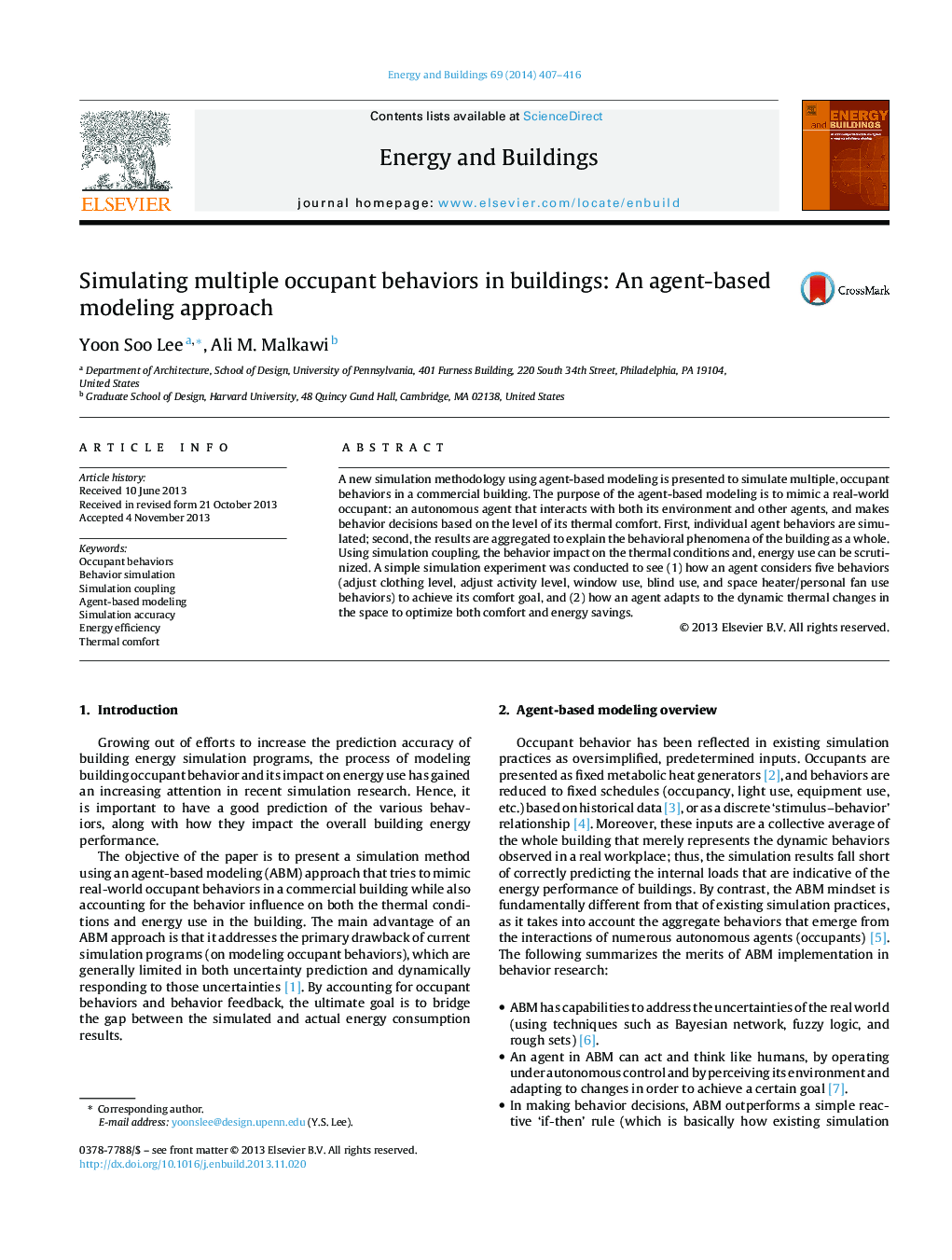| Article ID | Journal | Published Year | Pages | File Type |
|---|---|---|---|---|
| 263162 | Energy and Buildings | 2014 | 10 Pages |
•An open architecture agent-based modeling (ABM) is introduced to predict occupant behaviors.•Simulation coupling is used to accounts for multiple occupant behaviors.•Occupant behaviors impact both comfort and energy performances.•The simulation methodology is applicable to various climates and building typologies.
A new simulation methodology using agent-based modeling is presented to simulate multiple, occupant behaviors in a commercial building. The purpose of the agent-based modeling is to mimic a real-world occupant: an autonomous agent that interacts with both its environment and other agents, and makes behavior decisions based on the level of its thermal comfort. First, individual agent behaviors are simulated; second, the results are aggregated to explain the behavioral phenomena of the building as a whole. Using simulation coupling, the behavior impact on the thermal conditions and, energy use can be scrutinized. A simple simulation experiment was conducted to see (1) how an agent considers five behaviors (adjust clothing level, adjust activity level, window use, blind use, and space heater/personal fan use behaviors) to achieve its comfort goal, and (2) how an agent adapts to the dynamic thermal changes in the space to optimize both comfort and energy savings.
